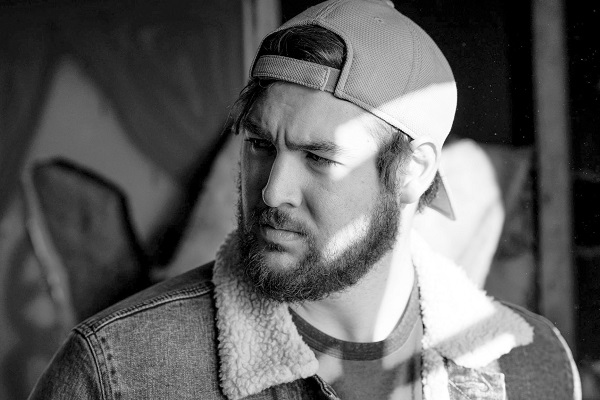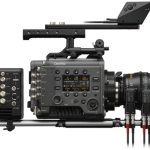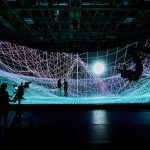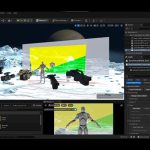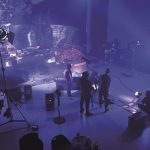Choosing the right virtual production set-up and configuration is much like choosing the right lenses, framing, feeling or movement of a scene, explains Matthew Collu in the third part of this series.
In content creation, the difference between acceptable and exceptional production often comes down to informed decision-making based on experience. Executing tasks such as selecting a lens or blocking a scene are critical decisions driven by a team’s extensive exposure to similar production requirements.
With the vast range of fields in the industry, leveraging expert proficiencies in a traditional production environment can help forecast the impact of these decisions on the aesthetics and costs of production. But what about something less traditional – something much more recent, innovative and influential that aims to change how studio production and content creation are approached and achieved?
There is no better example in today’s media landscape than virtual production. Shrouded in mystery but with eager curiosity, creatives are itching to gain the experience to make informed decisions. Leveraging my own experience in both production and research, I’d like to start by helping you answer the question: Which stage is the right stage?
Due to its near-infinite scalability, from a small, singular LED wall to a monolithic 270-degree LED cove, choosing the correct virtual production set-up and configuration is much like choosing the right lenses, framing, feeling or movement of a scene. Those choices are made based on how well they suit the needs of the production, and each is motivated by the three Cs – concept, content, camera – each equally important and intricate. Although synonymous with breaking down traditional production needs, they differ in a virtual production context.
Other End Head of Virtual Production Kevin McGeagh says: “To make sure that productions are able to meet their goals, a proactive and holistic approach to planning a virtual production shoot is necessary. In both thoughtfully selecting a facility and thoroughly planning how that facility will be used, all departments stand to benefit from the deployment of virtual production tools when it is done with care and with their specific concerns in mind.”
Concept
The concept is relatively unchanged in both understanding and approach. A good way of breaking down your idea into transferable and actionable facets is to ask: What is the story, and what is the visual tonality and literacy used to tell it? This allows critical elements to present themselves organically and dictates major components when bringing the idea to life. Things like characters, themes, motivations, visual style and setting (the most directly applicable to virtual production) are all deciphered and discovered at this stage. Figuring out who says what and where they say it equips you with the first nugget of information needed to figure out the best set-up for your big idea.
Virtual production leverages the efficiency and interactivity of real-time game engines to run photo-real digital environments that range as far as your imagination can take you. This means that, like the LEDs it’s projected onto, the environment and solution are scalable, allowing incredible location and scenery no matter what size your set-up is. If your frame consists of close-up shots of your actors skulking through a dimly-lit alleyway, a smaller layout should suffice, rather than a massive one that could house the entire city. Deciphering your concept informs you not only what your virtual vista looks and feels like, but also how to capture it, ensuring that your choice of the stage is as correct a decision as any other production tool.
Content
Now that you know where your scene occurs, the next step is to figure out the content that fills it. This is less about the media itself and more about the elements that make your location feel real. A flickering light above a worn-down door, a dumpster with a mountain of garbage piled beside it, produce crates scattered along the back entrance – these are content to fill the scene. However, with virtual production there’s an additional component: world placement.
To be more specific, the world you place your content inside matters. Like most studio productions, a good setting is a multi-layered cake of foreground and background elements. The background could be an entirely constructed set, or a chroma solution used for set extension during post-production. The foreground could be objects or scattered terrain placed closer to your subject. The same principles apply when executing a scene layout with virtual production, though more visually immediate and accessible onset, and infinitely and digitally extendable without fear of running out of physical depth.
Understanding what content will fill what space is crucial when establishing your virtual production set-up, as this dictates what size facilitates your foreground and background content needs. If the background elements of your close-up alleyway shots are simply the narrow walls and atmospherics, you will likely fill out your foreground with a dumpster, a wheelbarrow, a shipping van and three back-alley miscreants. A smaller set-up would make that rather difficult. A firm understanding of your content layout makes all the difference when deciding what kind of solution works best for your scene, since the scale of your captured world can correctly translate into the scale of your LED wall.
Camera
Finally, we arrive at the camera components you intend to employ to capture your scene in all its glory. With a multitude of parameters to decide on, this demands some forethought on framing, lensing and all things that dictate what you’ll need from the LED wall. However, perhaps the most significant component is the kinetic nature that ties it all together: movement.
Movement without consideration for the real estate it moves through is an issue on both a standard set and a virtual one. Just as you want to make sure a light or crew member doesn’t suddenly appear in your crane shot, you also want to avoid shooting the edges of your LED wall. For large, epic, sweeping arcs covering much ground, you’ll need a full-path solution – otherwise, you may capture far more than just your alleyway and subject. Knowing your visuals and kinetics helps you make the right choice when selecting your LED solution for how you wish to move through your set and, ultimately, how you want to represent the space.
As separate facets of the scene breakdown, these are important and integral thought points in any production, virtual or traditional. Combining all three allows a concrete and diligent understanding of the requirements for the story, setting and solution, to bring it all together. Picking the right stage for your production truly comes down to correctly understanding the world you are building and the world you are working in – knowing the story you wish to tell, and above all else using the practical experience gathered during proper time spent with your idea in order to make informed decisions as to what makes it come alive in the best way possible.
Matthew Collu is Studio Coordinator at The Other End, Canada. He is a visual affects artist and cinematographer with experience working in virtual production pipelines and helping production teams leverage the power of Unreal Engine and real-time software applications.




































































